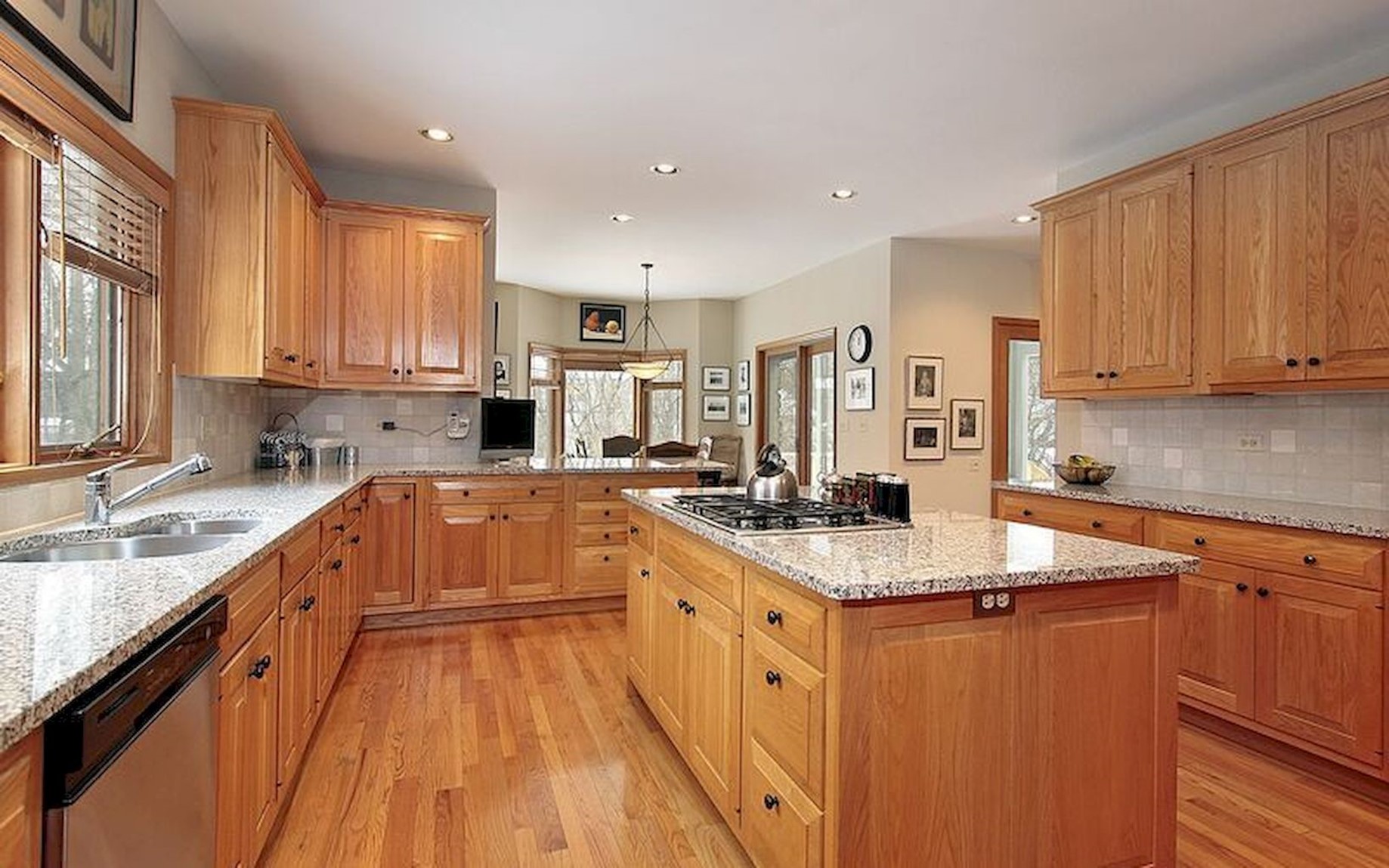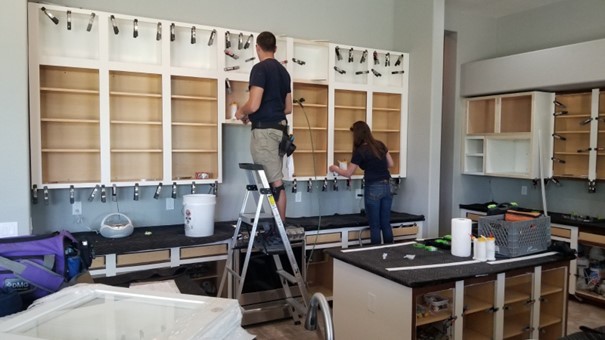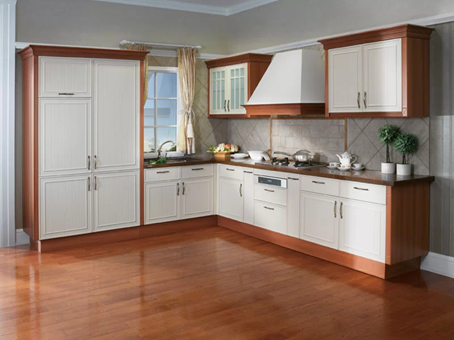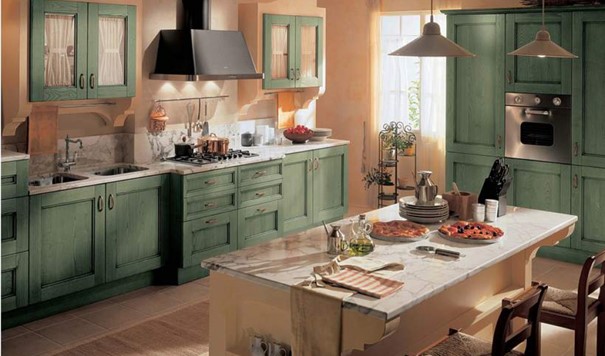If you are wondering how to paint kitchen cabinets, you have come to the right place. There are several simple steps you need to take. First, prepare the cabinets by sanding their surface and applying wood filler. Allow the wood filler to dry and then wipe the surface with a lint-free tack cloth. It is important to dry the surface before applying paint because small particles will start to waft into the paint.
Sand Your Kitchen Cabinets
If you want to sand your kitchen cabinets, you will need a few basic tools. A putty knife and a paint scraper are good tools to use. You can also use a paint or varnish remover to prepare the surface of the wood. You will also need some alcohol to clean the surface after sanding. The sandpaper you use will depend on the type of wood and the type of finish you want to achieve.
The sandpaper should be shaped to match the grain of the wood. Apply it to the cabinet surfaces with circular motions. Once the coating bubbles, scrape it off. This method will work for oil-based coatings. After you are finished, you will have a clean, fresh finish.
If you are not comfortable using a sander, you can use a sponge. Sanding sponges are bendable and have a light to moderate abrasiveness. You can use them to get into tight places where other tools can’t reach. This is especially handy for cabinets that have a lot of dips. Another option is a belt sander. However, it should be used only when you want to remove the old finish. It can also leave marks on the cabinet doors.
You can also use a paint brush and roller. However, if you want a smooth finish, you should sand your kitchen cabinets first before painting them. This will take more time than the actual painting process. Sanding will prepare your cabinets for the paint to stick. Also, it allows you to get a smooth, even finish.
If you’re sanding your kitchen cabinets yourself, make sure to remove any coatings. If they’re coated with varnish or oil, you’ll have to remove this coating before sanding them. Oil-based coatings will leave a rough, unsightly finish.
Use Right Primer for Kitchen Cabinets
Whether you are painting a dark color on a white cabinet or are starting with an old stain, using a primer will help the paint adhere better to the surface. It will also help your paint job last longer. Water-based primers are preferred because they are easier to work with and don’t produce the strong smell of oil-based primers. Plus, they make the surface smooth for the paint to adhere to, which is especially important for cabinets made from porous materials.
There are plenty of the best primers to use on kitchen cabinets. It dries quickly, making it the ideal primer for painted cabinets that don’t require sanding. The formula also contains denatured alcohol, which makes it easy to clean. It can be applied using a roller, airless spray, or brush.
Before applying the primer, you should thoroughly clean your cabinets and remove any dust. A good quality primer is a must for painting laminate surfaces. It should be applied in two layers and allowed to dry thoroughly between applications. You should also use a high quality paint that is designed for painting laminate surfaces. You should always use a high-quality primer to ensure that the finish will adhere better to your cabinets.
The next step is to sand the surfaces. You can use fine 220-grit sanding blocks or 220-grit paper. Use the sanding block or fine paper to sand the surfaces in the corners and any other areas. Make sure to sand each area thoroughly, as this will help you apply the paint more evenly.
After sanding the cabinets, you should clean them thoroughly to remove any grease or dust. You should also use a wood filler if needed to fill cracks or holes. Once you have cleaned all surfaces, you can apply the primer.
Numbering the doors
Whenever painting woodwork, you should remember to number the pieces. This will make it easier to reattach them when finished. You can also mark the positions of hinges and screws with painter’s tape. This way, you’ll know exactly where to put them. It’s also helpful to store the hardware in jars.
To avoid accidental smudges, number the doors of cabinetry before you begin painting them. It may take a little extra time to do this step, but it’s worth it in the end. It won’t be as frustrating if you accidentally smudge a door and have to repaint it. Waiting at least one day between coats will make the painting process go more smoothly and you’ll be happy with the end result.
Once you have painted the face frames of the cabinets, you’re ready to paint the cabinet doors. To start painting the door frames, start with the inside edges of the outer cabinet, then move to the face frames. Next, you can start painting the doors and drawer fronts. Also, don’t forget to paint the molding and raised or routed features. When painting these pieces, make sure to let the paint flow into the corners and crevices so that the paint doesn’t get clumped together.
Before painting, make sure to remove all dust from the cabinet surfaces by using a damp cloth. Then, mix primer and paint and pour it into a paint tray. Dip a trim brush in the paint or use a 10-inch roller for flat surfaces. Once the primer and paint are dry, let the materials dry for about two hours. Then, use a 220-grit sandpaper on an oscillating sander to sand down any bumps.
Choosing a color for Kitchen Cabinet
Choosing a color to paint kitchen cabinets is an important decision because it can give your kitchen a fresh new look. It can also save you money over refacing or replacing cabinets. However, it is important to choose a high quality paint because it will last longer. The right color can instantly transform an old, tired kitchen. Here are 10 ideas to help you choose the best color for your kitchen cabinets.
First, consider the type of light and color of your kitchen. Kitchen lighting is often directed toward the work area, so choosing the right kind of lighting will help your work space. You can also install a hanging island light in the center of your kitchen to provide indirect lighting. The shade of your cabinets should complement your countertops. Once your cabinets have been painted, you can choose your hardware to complement them.
Second, think about the color of the other elements in your room. You should consider the walls, countertops, and backsplash, as well as the colors of the floors and walls. Choosing the right color can be challenging if you don’t know the colors of the other elements in your room. Using a color wheel as a guide can help you narrow down your options.
Third, consider your kitchen’s size. If it is a small space, you may want to consider a lighter color because it will make the room feel bigger. However, if the room is well-lit, a darker color will create a more dramatic effect.
At Instocktoday Kitchen Cabinets, we don’t let you go to so much trouble.We take over the entire workload, it only remains for you to choose your kitchen cabinet.You can examine our projects on site in our Columbia and Fairfax Showrooms.






